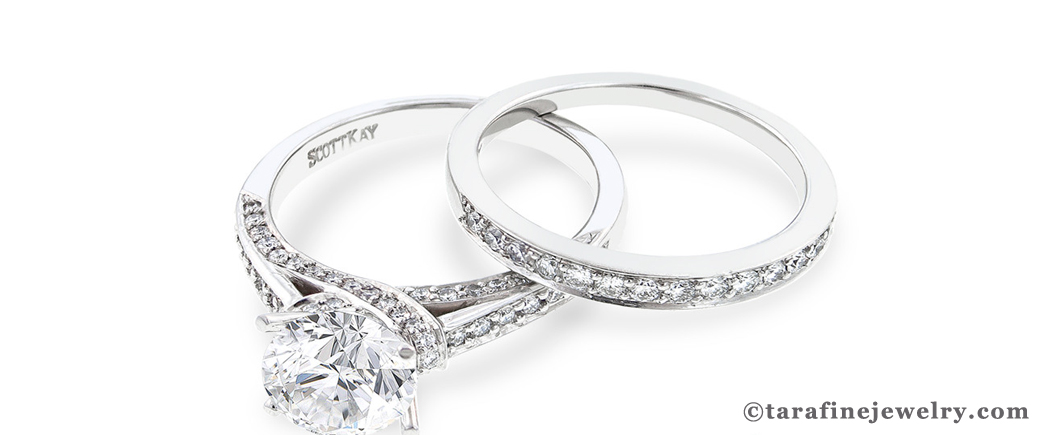A Glittering Future
“Birds do it, bees do it—even educated fleas do it. Let’s do it, let’s fall in love.”
The whimsical lyrics of Cole Porter’s 1928 song neatly sum it up: since the dawn of time, people have formed loving couples, the basis for family and society. And from early human history, the symbol of their devotion has been a ring.
The exchange of wedding rings is believed to date back to ancient Egypt, some 6,000 years ago, where papyri scrolls tell us spouses exchanged rings of braided hemp or reeds. The Egyptians saw the circle as a symbol of eternity and the ring signified the perpetual love of the spouses.
Western traditions are traced to ancient Rome and Greece and were first associated with the bride’s dowry (not much romance in an arranged marriage) and only later with the promise of love. The modern exchange of rings derived from customs of the Middle Ages, with a ring being bestowed on the bride. The tradition broadened only in the 20th century to include wedding rings for both spouses.
For the bride, there are usually two rings involved: the engagement ring, now popularly a diamond, and the actual wedding ring. Diamonds, widely considered to be a “girl’s best friend”—thanks to the DeBeers company and another song—have been associated with betrothal since 1477, when Archduke Maximillian of Austria commissioned the very first diamond engagement ring on record for his betrothed, Mary of Burgundy, sparking a trend among European aristocracy.
The sentimental Victorians popularized ornate engagement ring designs that mixed diamonds with other gemstones, precious metals and enamels. But it was not until 1947, when De Beers launched its now classic slogan, "A Diamond is Forever" campaign that diamonds became the go-to stone for proclaiming love.
“You rarely see diamonds mixed with other gemstones for engagement rings today,” said Dino Zabian of Lennox Jewelers, 165 Main Street in Great Barrington. “In my experience, I don’t get a lot of call for colored stones.”
His experience dates back 33 years, and he says the round brilliant cut, set in white gold or platinum is “far and away” the most popular look for engagement rings. He admits he has seen trends toward other cuts, such as the princess cut (square), the emerald cut and the marquise (long and narrow).
Indeed, Todd Faedi and his fiancée, Carole Purdy, entered the shop at that moment to pick up their engagement ring, faces beaming, as she slipped on a beautiful ring with a marquise-cut stone that had just been sized for her. The ring encompassed another bridal tradition: passing on a family gem. “It was my Aunt Doris’ ring,” Faedi said happily.
Zabian said he gets family rings to resize and refurbish for a new bride “from time to time,” and he also has two cases of estate jewelry for those who prefer a vintage ring. A vintage look from the Victorian or Edwardian eras continue to be popular, even in modern rings, he added.
“Halo” rings, in which the central stones are set in a ring of other diamonds, particularly lend themselves to the more complex style of vintage jewelry.
Most brides want a complementary wedding ring, often set with yet more diamonds, he said. Because most people wear their wedding jewelry all the time, diamond wedding bands bear up well under constant use. “They are designed knowing that people don’t take them off,” he said. “I just tell people to show common sense and have their rings checked by a jeweler every now and then.
In the 20th century it became more common for men to wear wedding bands, but Zabian said it is rare for couples to choose matching bands. “Men are interested in the new alternative metals, like titanium, tungsten and cobalt. They come in so many incredible styles, are more durable and a considerably less expensive than gold,” he explained.
One bridal tradition that seems to be slipping away, however, is jewelry for bridal party gifts. “Sometimes they buy key chains or money clips, but not so much anymore,” he said.

